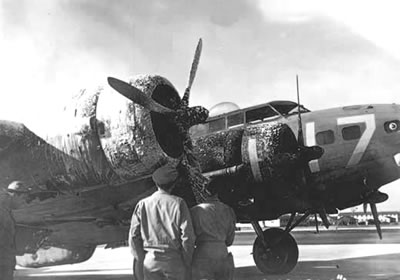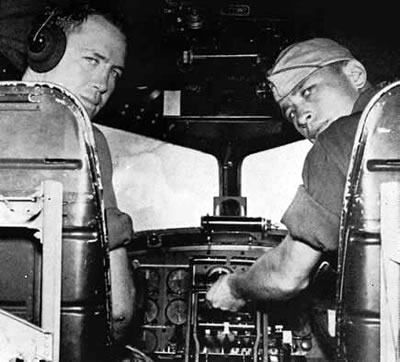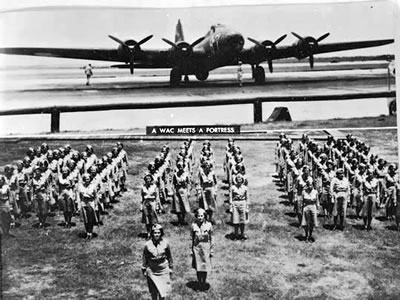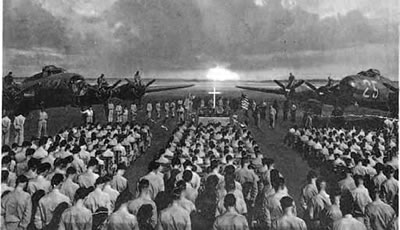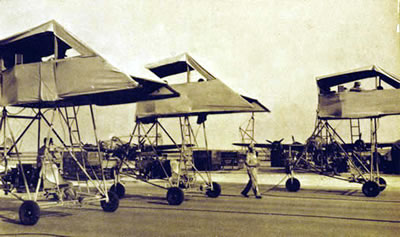In 1940, a committee of four representatives of the City of Sebring traveled to Washington D.C. to lobby for locating a military activity in the vicinity of Sebring. The motivation was both patriotic and financial. The city wished to offer its facilities for the war effort while obtaining a war-related activity to boost the area economy. Sebring offered a central location in the state with availability of railroad, power, water and housing backed by a record of cooperation by city officials and citizens.
After almost a year of promotional work, a Highlands County site was selected south of Sebring for a U.S. Air Corps Flying Training Command for a pilot training base capable of supporting 1,500 men and officers and 250 cadets at a time. The City of Sebring bought land and leased 9,200 acres at $1.00 per year for 99 years to the Secretary of War. On June 12, 1941, the U.S. Government advertised a legal notice for bids on the Basic Flying School at Sebring, Florida through the U.S. Engineering Department. According to Army Air Corps Colonel Leonard H. Rodreck, who designed, supervised construction and became the first commanding officer of the base, “a larger area than was necessary for a flying training base was requested of the city and, as a result, it was possible to design the layout plan for the runways so they could be greatly increased in width and more than doubled in length to accommodate any future designed type of military aircraft.”
By the end of 1941, the base was no longer just a pilot training school and it became the first Combat Crew Training School and the U.S. B-17 Flying Fortresses began using the field where entire crews – pilot, copilot, navigator, bombardier, aerial engineer, radio operator, and gunner were trained.
In January 1942, the base was named Hendricks Field in memory of First Lieutenant Laird Woodruff Hendricks, a native of Ocala, Florida. At this time, the base was essentially in place with four runways 150′ by 5,000′ with directional bearings N-S, NE-SW, E-W, and NW-SE, an aircraft parking apron and the majority of the landside buildings and facilities were complete.
On January 29, 1942, the first Flying Fortress landed at Hendricks Field. By mid-1942, the runways were widened to 300 feet, and the perimeter taxiways were constructed. Late in 1942, the function of Hendricks Field again changed to become exclusively a First Pilots flying school for B-17s.
With the end of World War II in 1945, Hendricks Field was inactivated on December 31. On January 25, 1946, the air base property was declared surplus to the needs of the U.S. Government and the lease was surrendered to the City of Sebring. The airfield, roadways, utilities, some buildings, various equipment and miscellaneous items were released to the city with typical reservations and restrictions concerning land and airport use. Many of the buildings were either sold or torn down at the time of surrender.
On February 21, 1946, the city received a temporary permit to operate Hendricks Field as a civilian airport and an Airport Committee of the City Council was appointed. A few days later, the first commercial flight from Hendricks Field was made when Sebring Flying Service made two passenger flights from the field.
Initially, the City Council was reluctant to assume responsibility as custodian of the field with a maintenance bill of $50,000 annually; however, the city agreed to lease the field with the limitation that it would not expend any money other than revenues derived from subletting facilities at the field. In May 1946, the city began airfield operations under a Right of Entry Permit and the field’s first two occupants, Eighth Air Depot and Veterans’ Airlines, opened for business. Both companies provided aircraft repair and maintenance. Under the permit, the airfield, three hangars and all buildings immediately adjacent to the landing area were turned over to the City of Sebring.
In January 1947, unable to secure absolute title to the field, the City of Sebring agreed to take over management of the airport. The airport’s name was changed to Sebring Air Terminal to avoid confusion with the wartime activities and to give it an advantage in attracting industry to the field. Under the terms of the transfer from the U.S. Government, the airport buildings could not be used for any purpose other than one relating to aviation. They included six connected with the field’s water supply, nine buildings associated with sewerage, nine administrative buildings involved in care of the field, one building housing electrical equipment, one building with telegraphic equipment and eight buildings housing equipment for the repair of aircraft. The Army Air Force reserved the right of use of 25 percent of the capacity of the field during peace time. Some 221 other buildings on the base site were not included and remained the property of the government. Soon after assuming management of the field, the city sold most of the airport land so that, essentially, the present airport property line was formed. In June 1947, the City of Sebring purchased the railroad system at Hendricks Field for $4,000.
The Government released all of the old Hendricks Field properties to the City of Sebring to enable any and all types of industry, trade and air transportation to be developed at the Sebring Air Terminal. The City of Sebring sold the land immediately adjacent to the present eastern edge of the airport.
In November 1958, the City Council passed an ordinance establishing an Airport Advisory Committee to make recommendations to the City of Sebring relative to the operation, management and control of the Sebring Air Terminal..
In 1967, the city turned over the deed of the airport to the Sebring Airport Authority, which had just been formed by the State Legislature.
Under the Sebring Airport Authority, a Commerce Park was started in the early 1970s and the airport name was changed to Sebring Airport and Commerce Park. Airport improvements consisted of the installation of taxiway lights on the two connecting taxiway, a non-directional radio beacon in 1970, runway lights on 18-36, a new rotating beacon in 1972, and runway lights on 14-32 in 1983. During 1981, the Authority sold 35 acres of land to the Sebring Utilities Commission to form the current airport property boundaries. The airport is identified in the Florida System as the Sebring Regional Airport.
Please visit www.allenaltvater.org (opens in a new tab) for online collections of historical information about Sebring Regional Airport.

